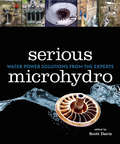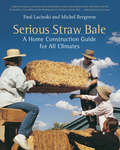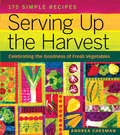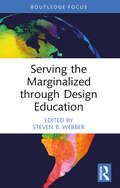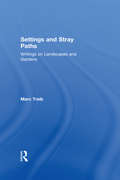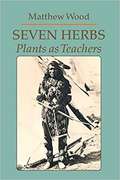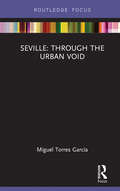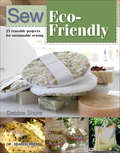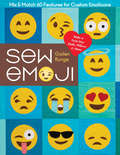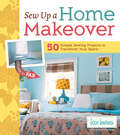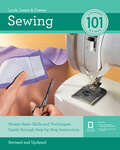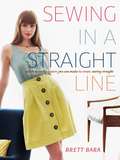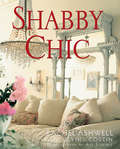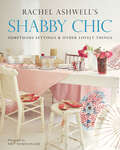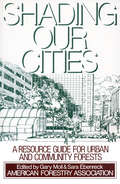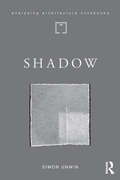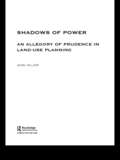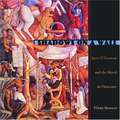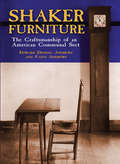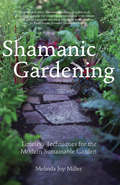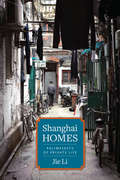- Table View
- List View
Serious Microhydro
by Scott DavisWaterpower is the largest source of renewable energy in the world today, and microhydro is a mature, proven technology that can provide clean, inexpensive, renewable energy with little or no impact on the environment. Serious Microhydro brings you dozens of firsthand stories of energy independence covering a complete range of systems, from household pressure sites to higher pressure installations capable of powering a farm, business, or small neighborhood. Topics include: Low head and medium head sites AC-only systems as well as ones using a battery/inverter subsystem Stand alone power supply or grid intertie setups Hybrid systems (combined with photovoltaics or wind) With all the variables involved in microhydro, there is no "typical" system. These case studies represent the most comprehensive collection of knowledge and experience available for tailoring an installation to meet the needs of a site and its owner or operators. If you are considering building a system, you are bound to find a wealth of creative solutions appropriate to your own circumstances. Serious Microhydro shows how scores of people are achieving a high standard of living from local energy sources with a minimal ecological footprint. It has particular appeal to homeowners, teachers, renewable energy professionals, activists, and decision makers who want to understand the technology from a "hands-on" perspective. Scott Davis is an award-winning renewable energy project developer with decades of experience operating, installing, designing, selling, and teaching microhydro technology. He is a founder and president of Friends of Renewable Energy BC, and the author of Microhydro: Clean Power From Water.
Serious Straw Bale
by Paul Lacinski Michel BergeronBergeron and Lacinski's new book "Serious Straw Bale" is the first to look carefully at the specific design considerations critical to success with a straw bale building in more extreme climates-where seasonal changes in temperature, precipitation, and humidity create special stresses that builders must understand and address. The authors draw upon years of experience with natural materials and experimental techniques, and present a compelling rationale for building with straw-one of nature's most resilient, available, and affordable byproducts. For skeptics and true believers, this book will prove to be the latest word. Thorough explanations of how moisture and temperature affect buildings in seasonal climates, with descriptions of the unique capacities of straw and other natural materials to provide warmth, quiet, and comfort year-round. Comprehensive comparison of the two main approaches to straw bale construction: "Nebraska-style," where bales bear the weight of the roof, and framed structures, where bales provide insulation. Detailed advice-including many well-considered cautions-for contractors, owner-builders, and designers, following each stage of a bale-building process. This is a second-generation straw bale book, for those seeking serious information to meet serious challenges while adventuring in the most fun form of construction to come along in several centuries.
Serving Up the Harvest: Celebrating the Goodness of Fresh Vegetables: 175 Simple Recipes
by Andrea ChesmanSavor the bounty! Whether harvested from your own backyard garden or bought at a local farmers’ market, nothing is more satisfying than delicious fresh vegetables. In this seasonal cookbook, Andrea Chesman offers 175 easy-to-make recipes that are designed to bring out the very best in whatever produce is currently peaking. From spring’s first Peas and New Potato Salad to autumn’s sweet Caramelized Winter Squash and Onion Pizza, serving up the harvest has never been so tasty!
Serving the Marginalized through Design Education (Routledge Focus on Design Pedagogy)
by Steven B. WebberDesign education and practice are inherently social from process to implementation. This book explores the transformation in design education, as educators prepare their students to address complex social design problems for all people in society.This seven-chapter volume provides the reader with a range of viewpoints on the role of design education in shaping the world. The book begins with the overarching potential of design to address the needs of an increasingly complex society and the importance of worldview that underpins education methodology. Each chapter addresses a context that varies by discipline – architecture, graphic, packaging and interior design – and location – Nigeria, Canada, Lebanon, UK and USA. The authors pull back the curtain on their educational methods and provide the reader with a candid view of their teaching outcomes. The needs of the marginalized – victims of Asian hate, students with dyslexia, tomato farmers and even design students themselves – are brought into focus here. These specific places and peoples provide a design context that can be translated to other situations in design education and practice.Design educators and practitioners of many design disciplines will benefit from the philosophical discussions and the practical education examples offered here. This volume can contribute to transforming design education that will one day transform design practice to place a greater emphasis on the needs of the forgotten in society.
Settings and Stray Paths: Writings on Landscapes and Gardens
by Marc TreibThese collected works represent twenty-five years of study of the designed landscape which the author here takes to include gardens, cemeteries, plazas and other shared spaces. Asking essential questions about the nature of order and its perception, this book includes in its impressive scope analyses of both historic and modern works with a geographical distribution that extends across Europe, Asia and North America. With unique depth in many areas of study, Treib brings his expertise to bear on a range of inter-related and mutually influential issues within the subject, taking in an assessment of the lives and contributions of a number of leading figures in the field, the contents of a landscape and the meanings ascribed to it, and a theoretical formulation of the ideas from which or by which landscape architecture is produced.
Seven Herbs: Plants As Teachers
by Matthew WoodThis book provides a skilled and knowledgeable exploration into to the uses of 7 herbs by a master herbalist. This book would be useful to students and practioners of herbalism, homeopathy, and flower essences, as the information can be utilized across these disciplines. The book clearly explains when and how to use these remedies and gives ample case studies from author's personal experience that further assist the reader in forming a clear picture of the signature of the herbs described.
Seville: Through the Urban Void (Built Environment City Studies)
by Miguel TorresRecent years have seen a growing interest in undetermined and unqualified urban spaces. Understanding cities as spaces for encounter, conflict and otherness, this book argues that this indeterminacy is not marginal but a key characteristic of urban space, and degrees of liberty foster change, creativity, and political action. The urban void is a conceptual construct that aims to render a principle of absence apprehensible, and to describe how it intervenes in place-making in the city. Seville: Through the Urban Void build mostly upon Henri Lefebvre’s work using concepts drawn on the social sciences, in order to articulate a biographic narrative of the Alameda de Hércules in Seville, Spain, which stands both as an outstanding instance of urban space and a very influential urban type. During its long historical span the Alameda has undergone alternating periods of decline and development, revealing the relations between successive urban paradigms and ideas of nature, territory, and the people. For the first time its whole history is told in a single account, which adds new perspectives to its understanding, and brings forward formerly disregarded aspects. This book shows how its liminal nature, which stubbornly persists over time, creates the conditions for creative processes.
Seville: Through the Urban Void (Built Environment City Studies)
by Miguel TorresRecent years have seen a growing interest in undetermined and unqualified urban spaces. Understanding cities as spaces for encounter, conflict and otherness, this book argues that this indeterminacy is not marginal but a key characteristic of urban space, and degrees of liberty foster change, creativity, and political action. The urban void is a conceptual construct that aims to render a principle of absence apprehensible, and to describe how it intervenes in place-making in the city.Seville: Through the Urban Void build mostly upon Henri Lefebvre’s work using concepts drawn on the social sciences, in order to articulate a biographic narrative of the Alameda de Hércules in Seville, Spain, which stands both as an outstanding instance of urban space and a very influential urban type. During its long historical span the Alameda has undergone alternating periods of decline and development, revealing the relations between successive urban paradigms and ideas of nature, territory, and the people. For the first time its whole history is told in a single account, which adds new perspectives to its understanding, and brings forward formerly disregarded aspects. This book shows how its liminal nature, which stubbornly persists over time, creates the conditions for creative processes.
Sew Eco-Friendly: 25 Reusable Projects for Sustainable Sewing
by Debbie Shore“Shore’s collection of simple sewing and crafting projects can inspire readers to create their own and reduce, reuse, and recycle, all at the same time.” —BooklistSew more, waste less. It’s never been more important to be mindful of what we consume. This book will help you to make 25 small but meaningful life swaps to help reduce waste and live more sustainably. Replace disposable face wipes with skin-friendly, washable pads; make beeswax fabric wraps so that you never have to buy single-use plastic food wraps again; make a sturdy shopping tote to replace plastic bags; trade in gift wrap and tape for stylish fabric wraps and gift bags.Packed with all the easy-to-follow instructions and friendly sewing tips you expect from Debbie Shore, this book also contains hints and tips for face scrubs, bath salts and more to use with your new projects, or to make a perfect eco-friendly gift. Vegan alternatives are suggested where possible.
Sew Emoji: Mix & Match 60 Features for Custom Emoticons; Make a Twin-Size Quilt, Pillows & More
by Gailen RungeFun, crafty creations that will get a smiley face and a big thumbs up!Make this clever bedroom set for your favorite kid, young adult, or anyone young at heart! Combine thirty-five popular emojis to create four fast, fun and easy projects—a twin-size quilt, throw pillows, a pillowcase, and a bolster. Then mix and match sixty facial features, including hearts, tears, eyes, mouths, sunglasses, tongues, and a halo, with suggestions for thirty additional emoji faces, plus four popular hand emojis (fist bump, peace sign, thumbs up, and praise) . . . and even the strangely popular poop emoji. With beginner-friendly projects and instructions, this book has everything you need to know to sew emojis!
Sew Home: Learn Design Basics, Techniques, Fabrics & Supplies: 30+ Modern Projects to Turn a House into YOUR Home
by Erin Schlosser“Projects ranging from simple curtains and linens to professional-quality window treatments and decorative accessories . . . excellent.” —Library JournalWritten by a sewist with a background in interior design, this is an essential guide to home-décor sewing. Included are 31 functional projects—ranging from beginner to advanced—including DIY window treatments, bed linens, storage solutions, rugs, pillows, and custom accessories for every room in your home. Work with cording and zippers, blind hems, and home decor fabric, and discover interior design basics that help you customize any space.“The must-have guide for any home-decor sewist.” —Sew News
Sew Up a Home Makeover: 50 Simple Sewing Projects to Transform Your Space
by Lexie BarnesGive your home a fresh new look. Lexie Barnes shows you how to quickly and inexpensively personalize your living space with 50 fun, pattern-free sewing projects that are highly adaptable and visually inspiring. Dramatic before-and-after photographs demonstrate how easy it is to brighten your living room with a custom-designed slipcover or give new life to a bedroom with a colorful headboard cover, lampshade, and matching window treatments. Get sewing and transform your home into the stylish abode you’ve always craved.
Sew What You Love
by Tanya Whelan30 surprisingly simple--yet delightfully charming--sewing projects Grand Revival designer Tanya Whelan's vintage modern aesthetic has made her fabrics and sewing patterns some of the most admired by sewers and quilters everywhere. In her first book, she presents a stylish collection of 30 easy-to-make sewing projects that are achievable by sewers of every skill level. Ranging from a pretty pleated clutch to a flirty French-inspired day dress and super-cute soft baby toys to a mistake-proof design-as-you-go quilt, each project comes with step-by-step instructions and illustrations, inspiring photographs, and helpful tips. These projects and patterns for children, adults, and the home are guaranteed to work well and produce a beautiful end result. Included are 3 pattern sheets enclosed in a handy pocket, providing everything you need to start stitching something you are sure to love. With Tanya's passion for sewing featured on every page, you'll soon discover just how gratifying sewing can be. From the Trade Paperback edition.
Sewing 101: Master Basic Skills and Techniques Easily Through Step-by-Step Instruction (Look, Learn & Create)
by Creative Publishing internationalA complete entry-level sewing course taught through twenty step-by-step projects for garments and home décor.Have you always wanted to try sewing but aren’t sure where to begin? Sewing 101 teaches you everything you need to know for successful machine sewing:The Basics gives you a firm foundation for learning to sew, offering essential guidance for your sewing machine, fabrics, patterns, and supplies.The Projects are arranged progressively, from simple garments like T-shirts, skirts, and aprons, to more challenging home décor items such as a blankets, tablecloths, and Roman shades. Each project introduces and explores new sewing skills in depth—and variations will inspire you to create your own designs.Beginners will also find the accompanying online videos that present the techniques in action an invaluable resource. Written specifically for beginners, the books in the 101 series are complete illustrated guides to the basics of a craft that present projects supported with full-color, step-by-step instructions and photos to teach essential techniques.
Sewing in a Straight Line: Quick and Crafty Projects You Can Make by Simply Sewing Straight
by Brett BaraIn just one weekend and using one skill, sewing straight, an entire world of sophisticated, but easily doable projects is open to you. Just about anyone can sew a straight line. And with that simple skill and some basic guidance, crafty expert Brett Bara demonstrates how you can make custom home decor, stylish fashions and one-of-a-kind gifts. "Sewing in a Straight Line" is a step-by-step guide to creating 28 deceptively simple projects that look like they came from a chic boutique, far more impressive than you would expect for such little effort! These easy-to-make items offer quick gratification that even the busiest among us will appreciate. From a flirty two-hour miniskirt to the cutest plush toys, many of the projects take only a spare afternoon. With step-by-step illustrations, clear instructions and loads of helpful hints and customisation ideas, "Sewing in a Straight Line" will quickly make a sewing enthusiast out of anyone.
Shabby Chic
by Rachel AshwellValuable flea market finds... A peeling, antioue vanity in muted sea green... An elegant, cracked chandelier... An enormous, slipcovered sofa with deep, cushions... Comfort, the beauty of imperfections, the allure of time-worn objects, and the appeal of simple practical living: these are the cornerstones of what has come to be known as the Shabby Chic style. Like the cozy familiarity of a well-worn pair of faded jeans, the dilapidated elegance of an Italian viIla, or the worn grandeur of faded velvets and mismatched floral china handed down from your grandmother's attic, the Shabby Chic style is a revived appreciation for what is used, well-loved, and worn. It is a respect for natural evolution and a regard for what is easy and sensible. The hundreds of lavish photographs in this book invite you inside the unique world of Shabby Chic. Rachel Ashwell, founder of theShabby Chic home decor stores, for the first time provides her invaluable and much-sought-after advice on how to re-create Shabby Chic style in your own home. With engaging text and easy-to- follow instructions, Rachel details the Shabby Chic basics in a way that will put even the most apprehensive or novice decorators at ease. From flowers to fabrics to lighting, Rachel illuminates all of the elements essential to this unpretentious yet truly exquisite style. A behind-the-scenes look at a flea market lets readers in on Rachel's personal secrets of how to cull hidden treasures from flea market trash--an old trunk, its paint peeling around the edges, can be given new life as a coffee table, while a chipped white iron salvage piece becomes the perfect frame for a vintage mirror. This book tells you not only how to restore these pieces but how to find the perfect place for them in your home. Gorgeous color photographs and accompanying text reveal how this relaxed look works with a variety of different styles, from Victorian to Mediterranean to contemporary.
Shabby Chic: Sumptuous Settings And Other Lovely Things
by Rachel AshwellCreating beautiful, sumptuous settings for any occasion!Top designer Rachel Ashwell, founder of the Shabby Chic line, is known for her trademark style of transforming drab interiors into warm, inviting spaces. Simply by incorporating a few design elements and a splash of color, Rachel is able to make any environment, whether it's a home or a special event, beautiful and fun. In Shabby Chic: Sumptuous Settings and Other Lovely Things, Rachel proves that her style isn't simply about creating an attractive home but also about creating joyful and pleasant settings for those we love. In this beautiful volume, Rachel applies her distinct eye for style to six very different locations and celebrations, and offers helpful tips on how to host whimsical and unforgettable events.Whether it is casual or formal, big or small, this beautiful book proves that entertaining need not be expensive. From flea markets to local antiques malls, Rachel reveals that the trick to making any event or space something elegant—without breaking the bank—is simply a matter of inspiration, imagination, and the discovery of a fabulous buy.Inside, you'll find practical ideas for any occasion, baby showers to weddings, birthday parties to bar mitzvahs. When it comes to setting a scene, Rachel is an expert and with her easy how-to advice, you can be too.Rachel Ashwell is the creator of the Shabby Chic style. In 1989, she founded the Shabby Chic home furnishing stores and then later, the Rachel Ashwell Shabby Chic Couture stores. She is the author of Shabby Chic, Rachel Ashwell's Shabby Chic Treasure Hunting and Decorating Guide, The Shabby Chic Home, and Shabby Chic: The Gift of Giving.
Shading Our Cities: A Resource Guide For Urban And Community Forests
by Sara Ebenreck Gary Moll Dale Robertson American Forestry AssociationShading Our Cities is a handbook to help neighborhood groups, local officials, and city planners develop urban forestry projects, not only to beautify their cities, but also to reduce energy demand, improve air quality, protect water supplies, and contribute to healthier living conditions.
Shadow: the architectural power of withholding light (Analysing Architecture Notebooks)
by Simon UnwinEach of these Analysing Architecture Notebooks is devoted to a particular theme in understanding the rich and varied workings of architecture. They can be thought of as addenda to the foundation volume Analysing Architecture, which first appeared in 1997 and has subsequently been enlarged in three further editions. Examining these extra themes as a series of Notebooks, rather than as additional chapters in future editions, allows greater space for more detailed exploration of a wider variety of examples, whilst avoiding the risk of the original book becoming unwieldy. Shadows may be insubstantial but they are, nevertheless, an important element in architecture. In prehistoric times we sought shade as a refuge from the hot sun and chilling rain. Through history architects have used shadows to draw, to mould form, to paint pictures, to orchestrate atmosphere, to indicate the passing of time … as well as to identify place. Sometimes shadow can be the substance of architecture.
Shadows of Power: An Allegory of Prudence in Land-Use Planning (RTPI Library Series)
by Jean HillierShadows of Power examines public policy and in particular, the communicative processes of policy and decision-making. It explore the important who, how and why issues of policy decisions. Who really takes the decisions? How are they arrived at and why were such processes used? What relations of power may be revealed between the various participants?Using stories from planning practices, this book shows that local planning decisions, particularly those which involve consideration of issues of 'public space' cannot be understood separately from the socially constructed, subjective territorial identities, meanings and values of the local people and the planners concerned. Nor can it be fully represented as a linear planning process concentrating on traditional planning policy-making and decision-making ideas of survey analysis-plan or officer recommendation-council decision-implementation. Such notions assume that policy-and decision-making proceed in a relatively technocratic and value neutral, unidirectional, step-wise process towards a finite end point. In this book Jean Hiller explores ways in which different values and mind-sets may affect planning outcomes and relate to systemic power structures. By unpacking these and bring them together as influences on participants' communication, she reveals influences at work in decision-making processes that were previously invisible.If planning theory is to be of real use to practitioners, it needs to address practice as it is actually encountered in the worlds of planning officers and elected representatives. Hillier shed light on the shadows so that practitioners may be better able to understand the circumstances in which they find themselves and act more effectively in what is in reality a messy, highly politicised decision-making process.
Shadows on a Wall: Juan O'Gorman and the Mural in Pátzcuaro
by Hilary MastersNovelist and essayist Hilary Masters recreates a moment in 1940s Pittsburgh when circumstances, ideology, and a passion for the arts collided to produce a masterpiece in another part of the world.
Shaker Furniture
by Edward D. Andrews48 sharp photos show side chairs, long benches, rocking chairs, chests, cupboards, much more. Exact measurements given for each piece to aid in identification, reconstruction, restoration. Also--highly readable commentary on sect's cultural background.
Shamanic Gardening
by Melinda Joy MillerA shaman is one who walks in two worlds, one seen easily by everyone, another seen with the senses of the heart, deep recesses of the mind, and within the collective spiritual consciousness. Shamanic Gardening integrates sustainable ancient and traditional gardening methods with shamanic principles and modern permaculture. The practices, history, myths, recipes, and philosophies inside this book will enhance your relationship with nature, sustain the earth, delight your senses, and nourish your soul. Shamanic Gardening includes a cultural history of sustainable gardening, including gardening techniques used by Cleopatra, the Japanese, The Pueblo Indians, George Washington and Thomas Jefferson, and many others. This book teaches both simple and advanced techniques to garden with more awareness and effectiveness, using your inner senses. Learn to design an elegant, edible, sustainable landscape, plant for nutrition and beauty, grow healing herbs and aphrodisiacs, work with earth energies and color, extract flower essences, and much more. Melinda Joy Miller is a feng shui master, cultural anthropologist, medicine woman, and Keeper of the Medicine Wheel of Peace teachings of the Senecas. She has been practicing and teaching permaculture techniques and shamanic healing for over thirty years.
Shanghai Homes: Palimpsests of Private Life
by Jie LiExploring three dimensions of private life territories, artifacts, and gossip Li re-creates the sounds, smells, look, and feel of home over a tumultuous century
Shanghai Homes: Palimpsests of Private Life (Global Chinese Culture)
by Jie LiIn the dazzling global metropolis of Shanghai, what has it meant to call this city home? In this account—part microhistory, part memoir—Jie Li salvages intimate recollections by successive generations of inhabitants of two vibrant, culturally mixed Shanghai alleyways from the Republican, Maoist, and post-Mao eras. Exploring three dimensions of private life—territories, artifacts, and gossip—Li re-creates the sounds, smells, look, and feel of home over a tumultuous century. First built by British and Japanese companies in 1915 and 1927, the two homes at the center of this narrative were located in an industrial part of the former "International Settlement." Before their recent demolition, they were nestled in Shanghai's labyrinthine alleyways, which housed more than half of the city's population from the Sino-Japanese War to the Cultural Revolution. Through interviews with her own family members as well as their neighbors, classmates, and co-workers, Li weaves a complex social tapestry reflecting the lived experiences of ordinary people struggling to absorb and adapt to major historical change. These voices include workers, intellectuals, Communists, Nationalists, foreigners, compradors, wives, concubines, and children who all fought for a foothold and haven in this city, witnessing spectacles so full of farce and pathos they could only be whispered as secret histories.
